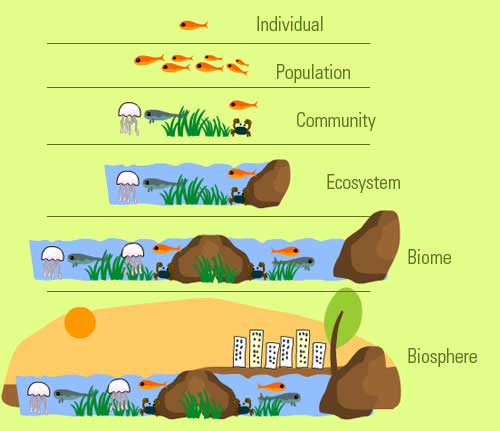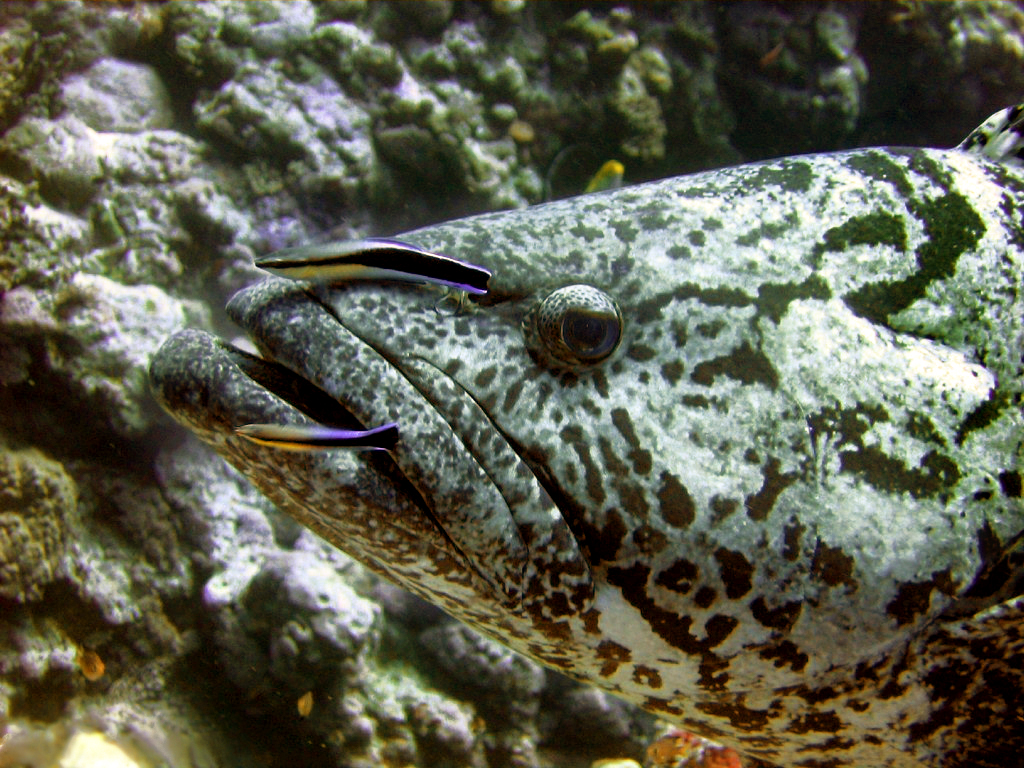Ecological Organisations
Levels of Organisation
There are 4 levels of ecological organisation. It starts at the lowest level:
- individual organisms
- then populations
- then communities
- then finally to the whole ecosystem.
Individual species of living organisms include every single plant and animal species that can be found on our planet. It includes also includes bacteria and fungi.
__A population __is when you have a specific group of species that can live together in a specific area. For example, you can have a herd of wildebeests living in African Savannah.
Next is the community, where different species live and interact together in a specific area. Different species would have symbiotic relationships, where they may rely on each other to survive.
Finally, the __ecosystem __is the biological environment that includes all living and non-living things (e.g. air, soil and water) in a specific region, and the interactions that take place between them.
Abiotic Biotic Factors
Communities can be affected by __abiotic __and __biotic __factors.
Abiotic Factors (Non-living physical factors that can affect living organisms in the community) :
- __Temperature: __If there is a low temperature, there will be less photosynthesis. Low temperature would limit the growth in plants. This is why there are normally less species living in colder climates.
- __Light intensity: __If there is a low light intensity, there will be less photosynthesis. This will create less food for the animals that would feed on the plants to survive. Some plants may become adapted by having bigger leaves or a waxy layer so that it can optimise the process of photosynthesis.
- __Water levels: __If there is a low level of water, plants and animals would not survive as water is vital for survival.
- __Air quality: __If there is a high level of pollution, animals would suffer as it affects their breathing system.
Biotic factors (living organisms that affect another living organism in an environment):
- __Food availability: __If there is a shortage of food, animals will struggle to survive. This will mean that they will reproduce less as they fail to compete for food.
- __Disease: __If there are new pathogens and parasites, organisms may be less healthy as they are not resistant to the new pathogens and parasites. This may kill an entire community if they are not prepared.
- __Predation: __If there are more predators arriving, organisms that cannot defend themselves will die off.
Interdependence
__Interdependence __is extremely important in a community.
It is when organisms within an ecosystem have to depend on each other in order to survive. If there is a slight change in one organism, it can have a drastic effect on the rest of the food chain.
For example, if there is a decrease in the number of worms, the birds would struggle to find food, therefore the number of birds may decrease. Foxes that normally eat birds will now struggle to find food as there is a low number of birds.
Parasitism Mutualism
__Parasitism __is a type of feeding relationship where two organisms live together, but one of the organisms feeds off the other.
- The organism that consumes the other is called the parasite, whilst the organism that is being consumed is called the host.
- Some parasites may live outside the host’s body, but sometimes they can also live inside.
- The host will tend to suffer - e.g. tapeworms will enter the host’s gut, and it will cause the host to lose weight as the tapeworm is surviving off the nutrients that are found in the host’s gut.
__Mutualism __is when the two organisms are able to live together whilst both of them are benefiting from living together.
- For example, the cleaner fish will feed off the parasites on the skin of larger fish, and the larger fish will carry them around and protect them.
- What is mutualism?
- Mutualism is when the two organisms are able to live together whilst both of them are benefiting from living together
- What are abiotic factors?
- Non-living physical factors that can affect living organisms in the community
- What are the 4 levels of ecological organisation?
- Your answer should include: Individual / population community / ecosystem

